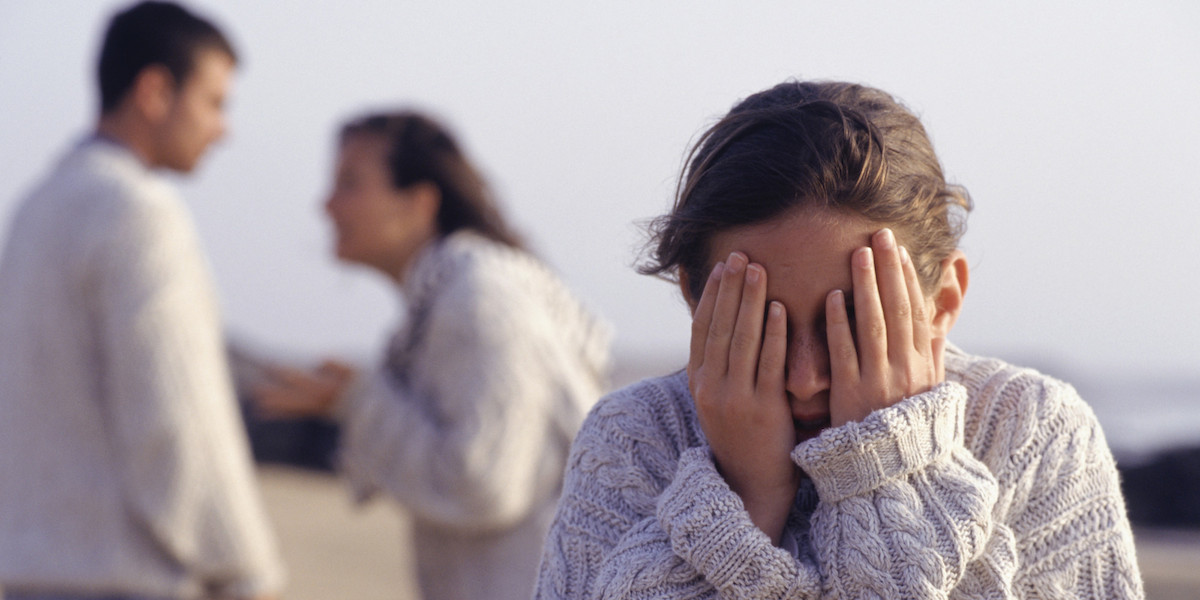
This is an important blog on how to help your kids keep safe from sexual abuse. Great insight and advice.
Five Body Safety Rules Every 5-Year-Old Should Know
This article originally appeared on Protect Young Minds.
It seems like the number of things you need to talk to your children about in order to keep them safe just keeps growing! One issue that should be at the top of your list is protecting kids from sexual abuse.
Why? The CDC reports that 1 in every 5 children will experience sexual abuse. That’s 1 out of 4 girls and 1 out of 6 boys.
By talking to your kids about personal safety, they will be more prepared to stay safe and get help when needed.
The Link Between Pornography and Child Sexual Abuse
Unfortunately, pornography fuels sexual abuse.
Protecting kids from child sexual abuse includes teaching them what pornography is and what to do if they see it. This not only helps prevent them from becoming a victim of non-physical sexual abuse (such as being shown pornography), but also potentially from becoming an abuser themselves. An estimated 23 percent of reported cases of child sexual abuse are perpetrated by children.
Here’s an example of what can happen: A child sees pornography without any idea of what is normal and not normal sexual activity. Not understanding that what they see is harmful, they act these scenes out on other children.
Sometimes adults are motivated by pornography to abuse others, including children. Adult abusers will often show pornography to children to groom them for further abuse. According to Defend Innocence, perpetrators will test boundaries and “see how a child reacts when privacy is violated.” Pornography is a tool they use to see how a child responds. The child’s reaction could mean the difference between safety (the abuser backs off) and extreme danger (the abuser feels like the child can be manipulated).
What’s the problem with the idea of “stranger danger”?
It was drilled into every ’80s kid’s mind: “Don’t take candy from a stranger.” For decades the message was so focused on strangers, that we failed to warn children that sometimes people we know and trust turn out to be dangerous too.
Are strangers the main danger? Statistics tell us NO. The National Sex Offender Public Website (NSOPW) reveals that in 90 percent of sexual abuse cases, victims know their abuser.
Sixty percent of perpetrators are not family members, but someone the child knows: a babysitter, a babysitter’s boyfriend (whom you didn’t know was at your home), an older sibling at a friend’s sleepover, or a long-time family friend. Sexual abuse happens during playdates behind closed doors and in bathrooms at school. Yes, elementary school.
Surely we can trust our children with members of our family? The NSOPW reports that 30 percent of perpetrators of sexual abuse crimes are family members. It’s hard to swallow, isn’t it? A mistake we make as parents and adults is trusting people just because they’re family.
Here’s what you can do to protect kids from sexual abuse:
You might be thinking to yourself, I’m never leaving my children alone again. Don’t worry, there’s hope. You can become an educated and proactive parent who does everything in their power to protect children from sexual abuse.
Let’s start by learning about body safety rules. While it’s not your child’s responsibility to protect themselves from sexual abuse, he or she should be taught important boundaries about their body. The guidelines below are adapted from the non-profit organization, The Mama Bear Effect.
The Basics of Body Safety
- Use actual names of body parts
While you’re teaching nose, elbow and knee, also teach your children the correct names of their private body parts: penis for boys and vagina, vulva (the name for female external genitalia) and breasts for girls. Now your child has the vocabulary to tell you if someone touches or shows them private parts. If they start calling their private parts a different name, ask them where they learned it from. - Appropriate and inappropriate touch
While you are teaching your child the names of body parts, also tell them that no one should touch or show private parts (the ones covered by a swimsuit). Talk about a couple of exceptions. Explain how a parent, babysitter or grandma (etc.) may need to help you wipe after going to the bathroom. A doctor may have to look at your private parts to make sure everything is healthy—but you will always have a parent with you in a doctor’s appointment. - Discuss with your child what an appropriate touch is, like hugs and high fives
Find out what kind of touch they’re comfortable sharing with people they care about. Create family guidelines about the appropriate people to share affection with (hugging, kissing, cuddling, etc.). Inappropriate touches happen when someone touches your private parts, or even hugs too long, touches somewhere near a private part, or an inappropriate kiss. It’s important to tell an adult if someone touches a private part, or does something you feel uncomfortable with. Practice using the terms appropriate and inappropriate touch. It may seem easier to say good touch or bad touch, but this can be confusing for kids. Sometimes, inappropriate touches might feel good. - Consent
Now that you have helped your child identify appropriate touches they feel comfortable sharing with others, help them enforce the boundaries they have set. If they don’t like to kiss people on the cheek as a farewell, don’t force them to kiss anyone, even a family member. Encourage them to share a high five instead, an appropriate touch they’ve identified as OK. Never force anyone to give or receive affection they don’t want. Consider having a family rule that you ask (and receive) permission before giving affection. Within the walls of your own home, it’s easy to practice consent by saying, “Do you want a hug?” or “Do you want to come cuddle during the movie?” Set a rule in your home that No Means No and Stop Means Stop. If siblings are wrestling or tickling each other, and someone says, “Please stop!”—make sure everyone stops immediately. Conversations about consent should evolve as your child gets older. What do you do if someone taps your bum while walking down the hallway at school? Discuss this and other issues, like your family standards around affection between a boyfriend and girlfriend. What do you do if your boyfriend and you are kissing and he touches your breast? Preparing your teenagers for these issues (whether they happen or not) teaches them valuable lessons about consent—they are the boss of their body. - No secrets—surprises instead
You don’t want a predator to encourage your child to keep a secret from you. A conversation with your kid about secrets might sound like this: A secret is something that is kept unknown from certain people. If someone tells you to keep a secret from me, it might be because they are trying to hurt you. We don’t keep secrets in our family so that everyone is safe. If anyone tells you to keep a secret, you will not be in trouble for telling me. In fact, I will be so happy you told me so that I can make sure everyone we love is safe, including you. Instead of secrets, we keep surprises in our family. Do you know what’s great about a surprise? Everyone finds out what’s going on! So you and I might buy your dad a surprise chocolate candy bar for his birthday. He will be so surprised when we give it to him!
Bonus rule! Build a body safety network
Help your child choose three to five adults they could go to if someone breaks a body safety rule. Help them identify people both within and outside your family. Make it clear that children do not get in trouble if someone else breaks a body safety rule; it’s important that they tell someone in their body safety network. Make sure you tell the adults who have been selected as part of your child’s safety network. Tell these adults what you would like them to do if your child comes to them for help. Explain how important it is that they believe your child, should they tell them something.

 Eliminating Sexual Violence Could Reduce Poor Mental Health Among Teens
Eliminating Sexual Violence Could Reduce Poor Mental Health Among Teens  Study Reveals the Lasting Effects Childhood Trauma Has on Adult Relationships
Study Reveals the Lasting Effects Childhood Trauma Has on Adult Relationships  Children Exposed to Intimate Partner Violence Twice as Likely to Have Poorer Health
Children Exposed to Intimate Partner Violence Twice as Likely to Have Poorer Health